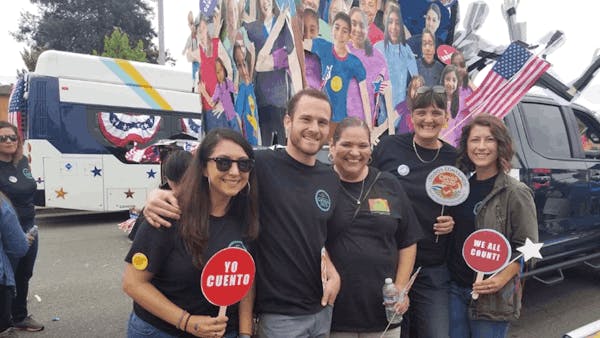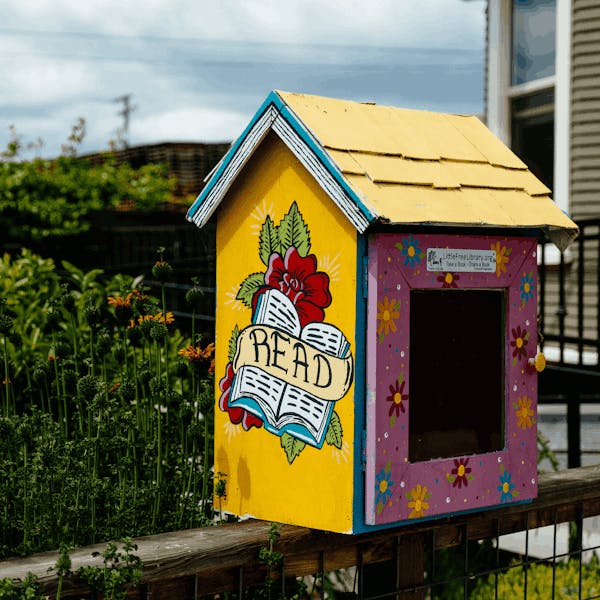Act Now
This giving season presents a unique opportunity to strengthen the place we call home. And this year, there's added reason to act.

Counting on Community, Why the 2020 Census Matters
As a concept, the United States Census seems simple. Every 10 years, the government takes a count of every person in the country, then uses the data to make decisions about how and where to deploy resources.
But in practice, it’s an enormously complex undertaking that involves every state, city, and county in America. The census is made all the more urgent by what’s at stake: millions of dollars for things like food assistance, basic health services, child care, and education. Programs such as Medicaid, food stamps, and highway planning and repairs get their funding from census data. The census also determines political representation in the House of Representatives.
Working to achieve a complete count in 2020
An accurate count of all people living in our community and across California is imperative for the health of our region. For every Californian missed by the census, the state loses about $2,000 in critical service dollars —not just in 2020, but every year for 10 years. As a community it determines our voice in the democratic process.
Unfortunately, the counts historically come up short, especially among children, rural residents, individuals of color, immigrants, the elderly, and those experiencing homelessness. Heading into the 2020 Census, many fear that the undercounts will be even more significant than in years past, due to heightened fears over how information will be used. While information collected through the census is protected and cannot be used for other purposes (such as in IRS or immigration proceedings), the perception among many vulnerable communities is that it’s dangerous to willingly give one’s information to the government.
As a further challenge, the federal budget for 2020 Census outreach has been cut every year since 2017, squeezing efforts to educate the public, respond to concerns, and boost participation. In response, foundations, philanthropists, and nonprofits across the country are stepping in to help fill the gap.
Through our community leadership, the Community Foundation has expertise in bringing engaged community members together to make measurable differences on some of our community’s toughest issues. The stakes are high for a fair and accurate 2020 Census, and that’s why we chose a proactive, community-based solution to the threat of undercounting.
Collaborating in Santa Cruz County
In partnership with the County of Santa Cruz, the Census Bureau, and Community Action Board, the Community Foundation is involved in the Santa Cruz County Complete Count Committee, which is comprised of local leaders who represent diverse populations and who are working within their communities to develop outreach strategies that will ensure a complete count in our region. The group seeks to engage hard-to-count populations in the 2020 Census, especially seniors, students, immigrant families, and homeless community members. The key is to build on trust that exists between community-based organizations and the people they know and serve.
Grantmaking Fuels Smart Outreach
The Community Foundation raised $200,000 from local donors, foundations like Sunlight Giving, and state funds for coordinated outreach efforts. This fall, we awarded grants to organizations who are working in alignment with our County’s strategic plan for an accurate count. Funding went to:
- City of Watsonville
- Community Action Board (includes subcontract w/ Center for Farmworker Families)
- Community Bridges
- First 5 Santa Cruz County
- Grey Bears
- Planned Parenthood Mar Monte
- Pajaro Valley Prevention & Student Assistance
- Salud Para La Gente
- Santa Cruz Community Health Centers
- United Way Santa Cruz County
- Walnut Avenue Family & Women's Center
- Additional funds will be awarded in early 2020 to fill outreach gaps identified by the Complete Count Committee.
Five Ways You Can Support the 2020 Census
- Help people understand that responding to the 2020 Census is important and safe.
- Talk to your friends and family members to make sure that they and their communities are prepared, especially those who are “hard to count.
- Find out what your favorite nonprofits are doing to encourage those they serve to participate in the Census, and how they are supporting them with resources and information
- Invite a representative of Santa Cruz County Counts to your office, board meeting, place of worship, or community gathering to speak about the importance of the Census.
- Visit www.santacruzcountycounts.us/ to learn more and get involved.

